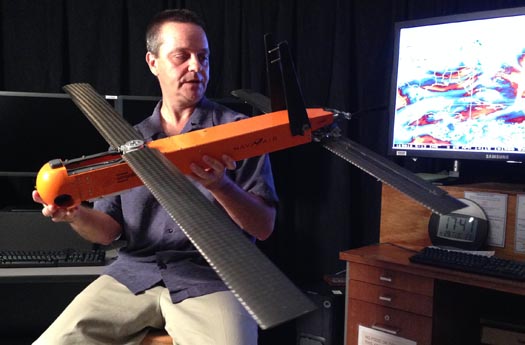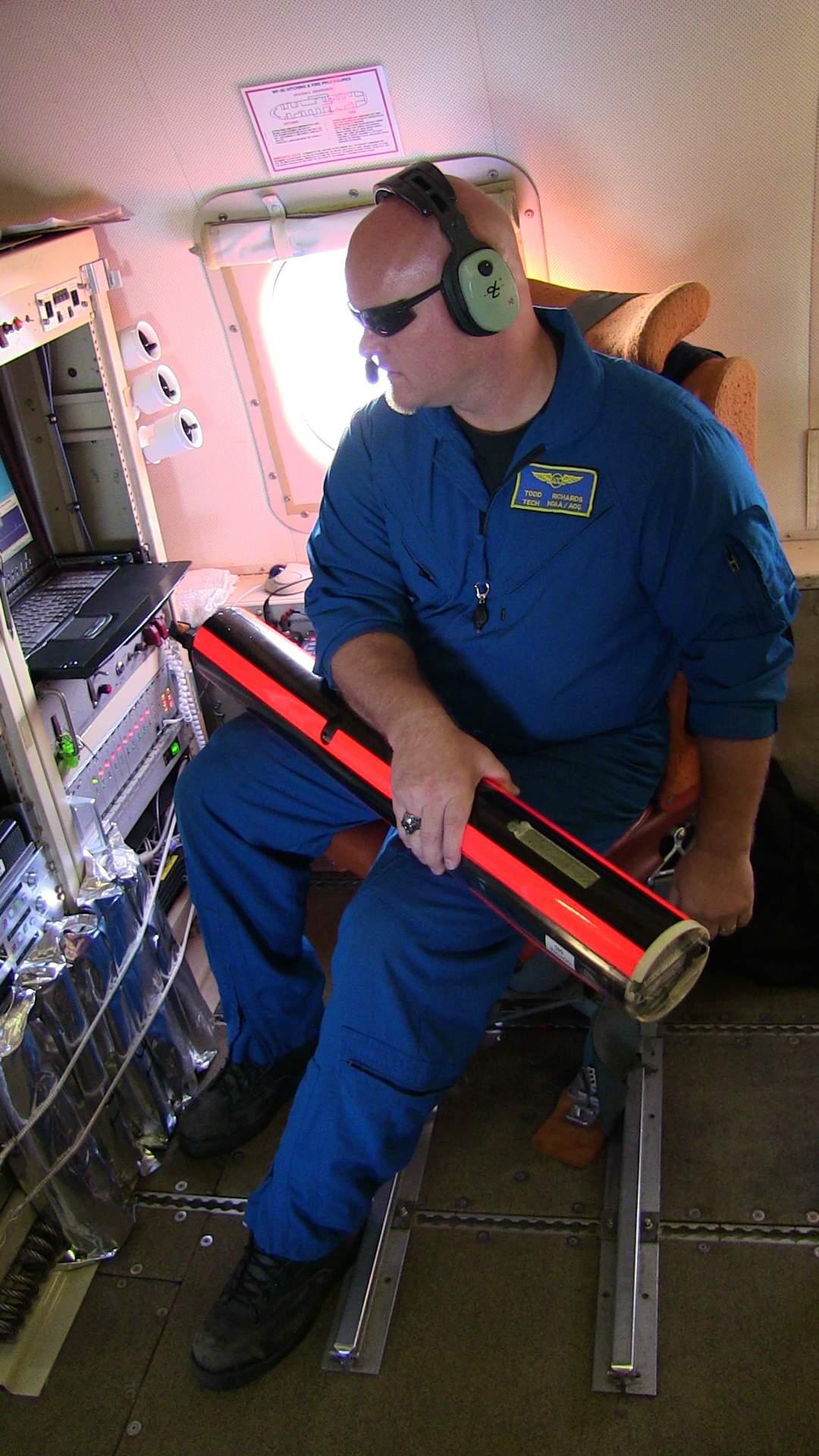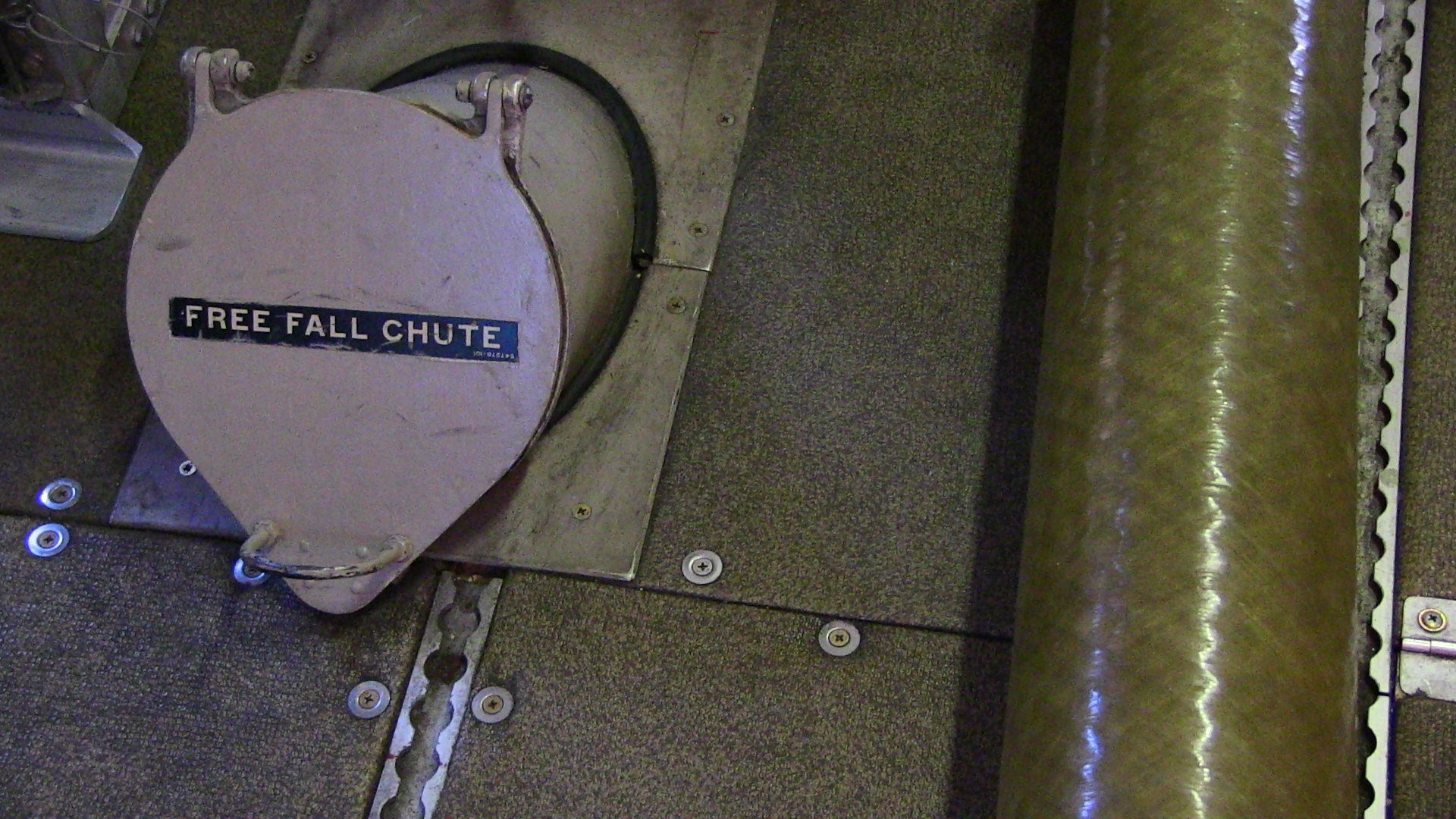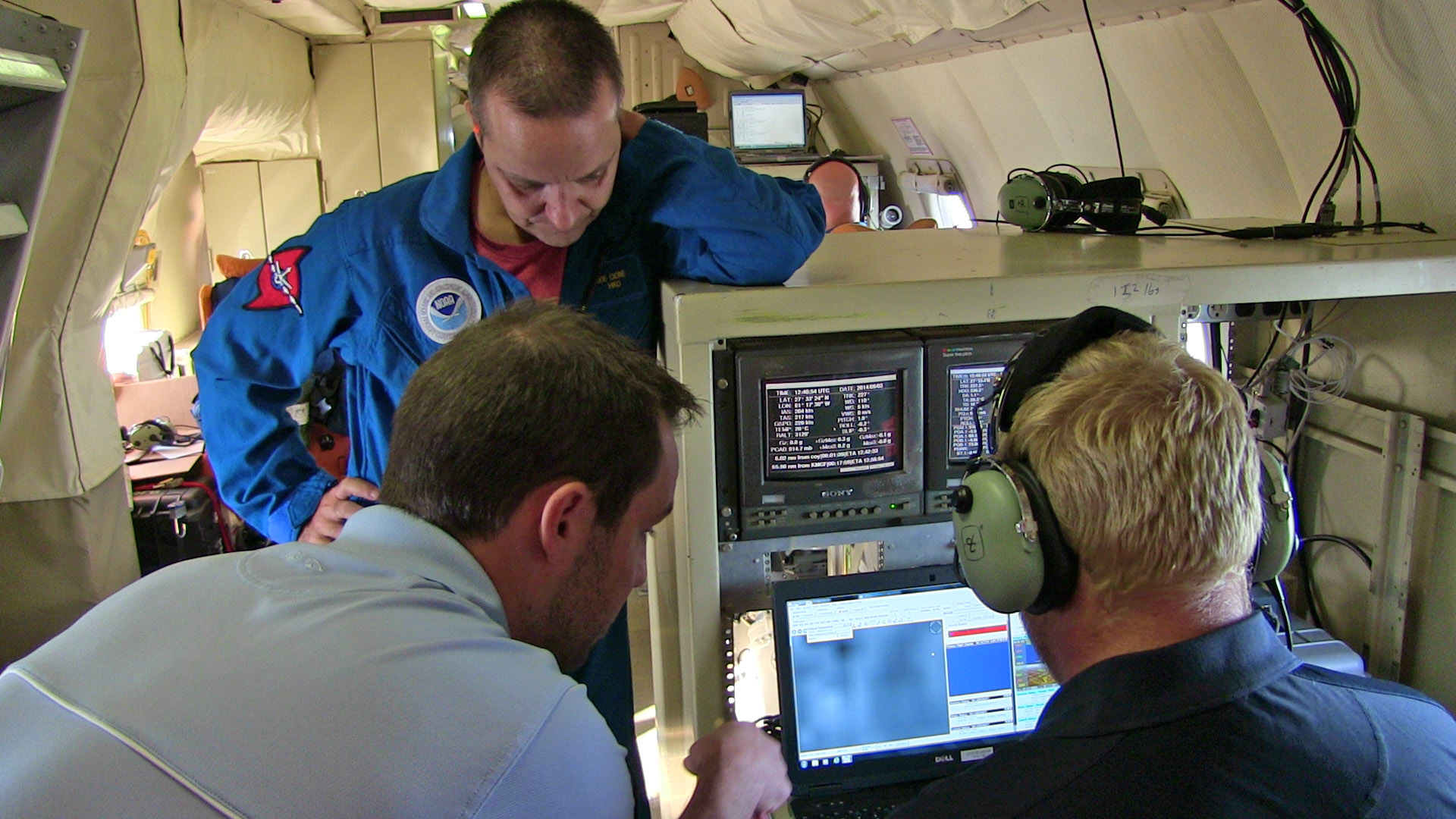
|
| Dr. Joe Cione of AOML’s Hurricane Research Division displays the Coyote UAV (Credit NOAA/AOML) |
NOAA hurricane hunters are prepared to enter a new chapter in the use of unmanned aircraft systems: deploying an unmanned aircraft from an airplane inside a hurricane. Starting on September 14, 2014, NOAA’s hurricane hunting manned aircraft fleet will fly into position to observe any developing tropical systems in the Atlantic using this new tool. The Coyote unmanned aircraft will be the first unmanned aircraft deployed directly inside a hurricane from NOAA hurricane hunter aircraft. The goal of the Coyote is to collect temperature, pressure and wind observations below 3,000 feet, where manned aircraft can not fly safely.
 |
| The Coyote UAS is ready to launch. (Credit: NOAA/AOML) |
Post-Hurricane Sandy federal funding, the Disaster Relief Appropriations Act of 2013, provided NOAA with the opportunity to test this new technology in hopes of better understanding and evaluating how storms evolve and intensify.
This new unmanned aircraft will do just that. The Navy originally designed the Coyote for maritime surveillance. NOAA is using it now for hurricane science.
During the 2014 hurricane season, the Small Unmanned Aircraft Vehicle Experiment will test the capability of the Coyote in storms, observing how well it handles severe winds and the harsh hurricane environment.
Scientists aboard NOAA’s P-3 Orion aircraft will deploy the seven-pound unmanned aircraft from a free fall chute in the belly of the plane. The Coyote is designed to then
 |
| Chute on P3 used to launch the Coyote. (Credit: NOAA/AOML) |
open its six-foot wingspan and fly through the storm. It can be controlled from miles away but will be piloted by scientists onboard the P-3s. Its relative lightweight design requires the Coyote to fly with the wind currents, but it will be directed up, down, and sideways to navigate specific flight patterns to measure the storm’s inner core and storm activity at the lowest altitudes.
Hurricanes are fueled by warm ocean water, and vital information needed to better understand and predict intensity change may rest close to the sea surface where manned aircraft cannot fly. With its ability to fly for up to two hours in this region, the Coyote will provide much more complete data than traditional air-deployed weather instruments, called dropsondes.
NOAA conducted a test-launch of the coyote from the NOAA P-3 aircraft in early September. That successful flight demonstrated the capability of the unmanned aircraft to exit the aircraft, spread its wings, execute flight maneuvers at the commend of a pilot on the P-3, and collect and transmit meteorological observations back to the P-3.
 |
| The crew monitors the in-flight Coyote UAS from the piloting station on the P3. (Credit: NOAA/AOML) |
In addition to providing support for testing new technologies, the Disaster Relief Appropriations Act of 2013 also provided funding to assess of the value of incorporating data from these and other instruments to hurricane forecast models. NOAA’s Atlantic Oceanographic and Meteorological Lab will evaluate how such ocean observations can best improve hurricane forecasts of track and intensity change.
Originally Published in September 2014 by Shannon Jones